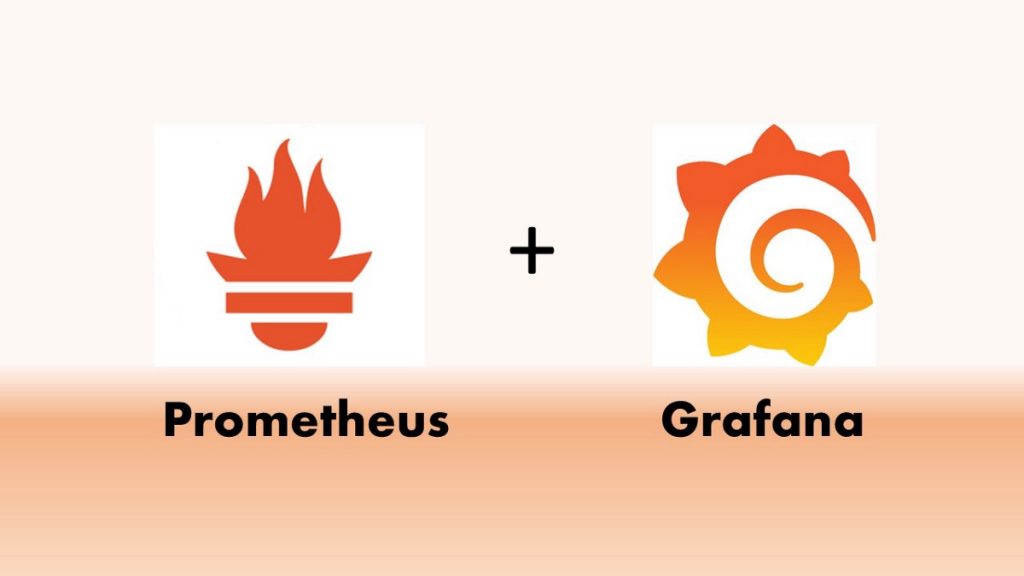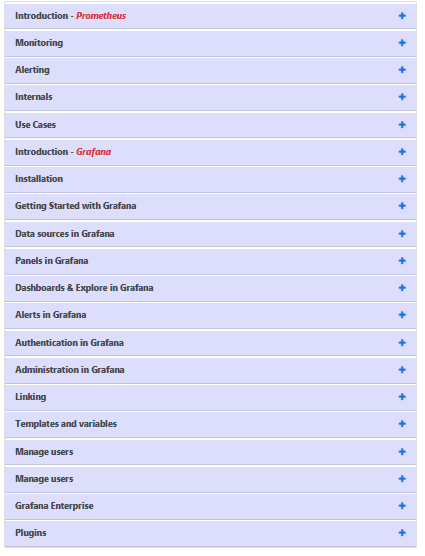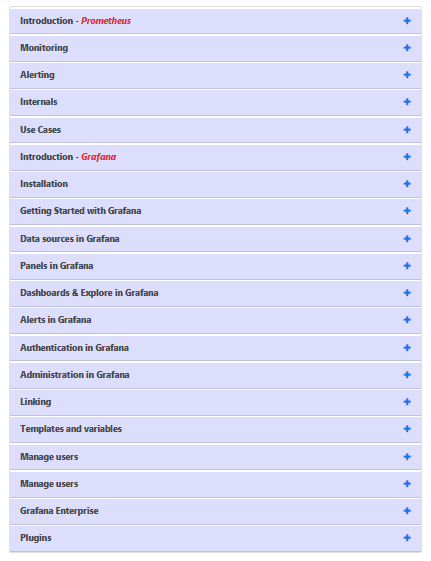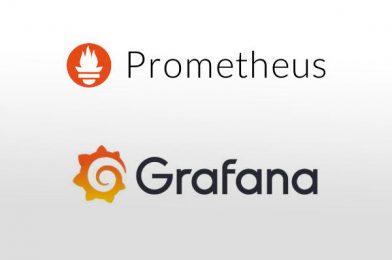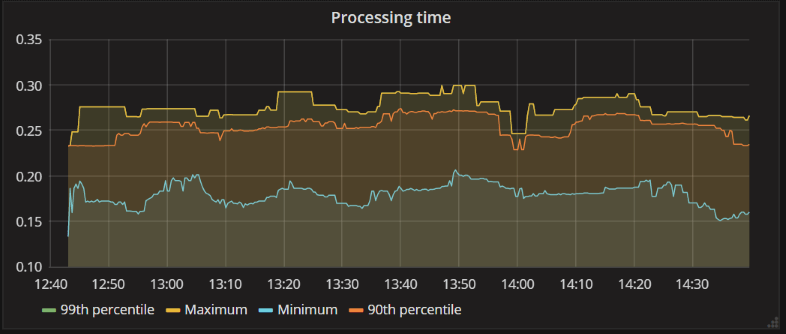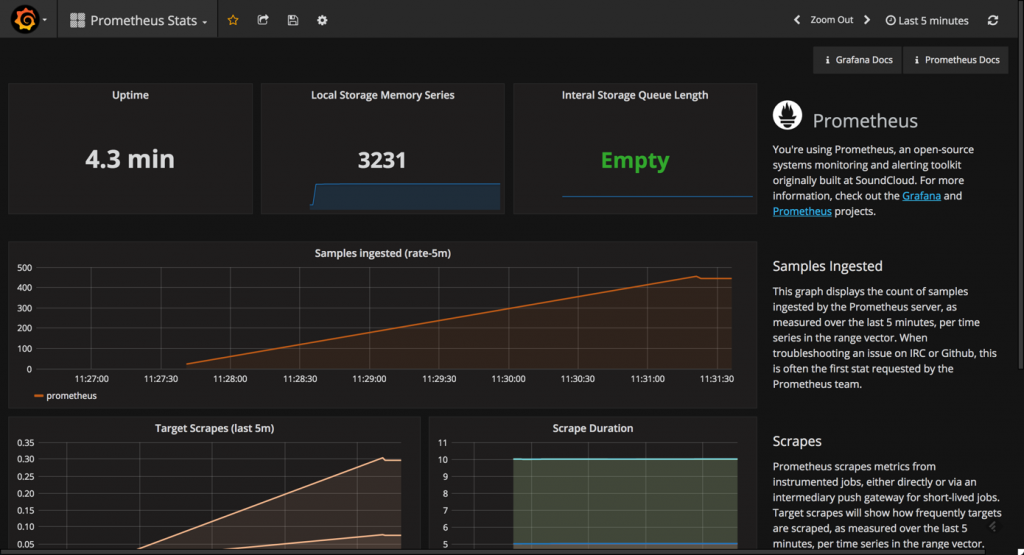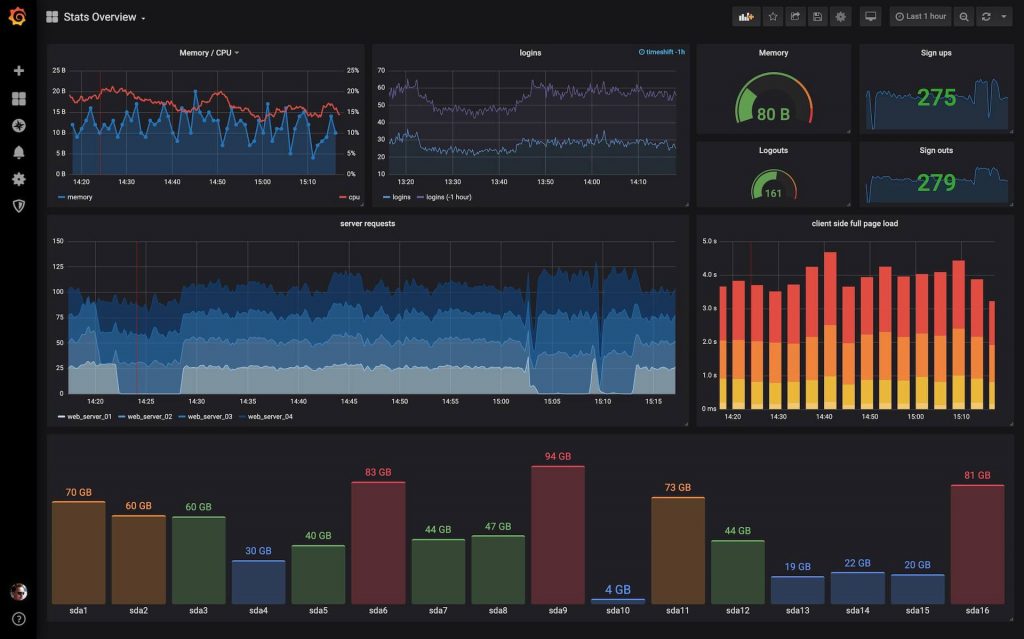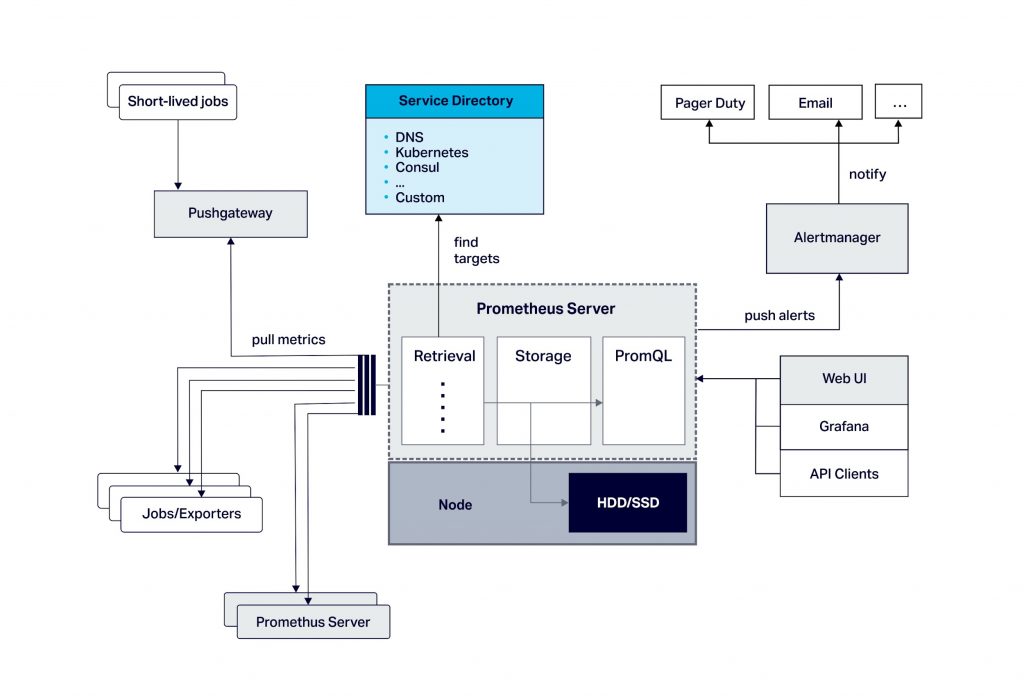Install and Configure Prometheus Server and Node Exporter
There are 3 importants components to make sure Prometheus is up and running. We need to install and configure
- Prometheus Server,
- Node Exporter, and
- Dashborad which can be PromDash or Grafana.
Step 1 – Install and configure Prometheus Server in RHEL 7
Download Prometheus
Download Prometheus from https://prometheus.io/download/. You can find 3 Prometheus package which is supported for darwin/linux and windows.
$ sudo -s
$ yum install wget -y
$ cd /opt/
$ wget https://github.com/prometheus/prometheus/releases/download/v2.3.2/prometheus-2.3.2.linux-amd64.tar.gz
$ tar -zxvf prometheus-2.3.2.linux-amd64.tar.gz
$ cd prometheus-2.3.2.linux-amd64
If you find following files….
[root@ip-172-31-21-164 prometheus-2.3.2.linux-amd64]# ls -1
LICENSE
NOTICE
console_libraries
consoles
prometheus
prometheus.yml
promtool
This completes the Prometheus installation.
Verify the installation by typing in the following command:
[root@ip-172-31-21-164 prometheus-2.3.2.linux-amd64]# ./prometheus --version
prometheus, version 2.3.2 (branch: HEAD, revision: 71af5e29e815795e9dd14742ee7725682fa14b7b)
build user: root@5258e0bd9cc1
build date: 20180712-14:02:52
go version: go1.10.3
Step 2 – Install and configure Prometheus Node Exporter in RHEL 7
In order to monitor the metrics of your RHEL server, you should install a tool called Node Exporter. Node Exporter, as its name suggests, exports lots of metrics (such as disk I/O statistics, CPU load, memory usage, network statistics, and more) in a format Prometheus understands.
cd /opt/
wget https://github.com/prometheus/node_exporter/releases/download/v0.16.0/node_exporter-0.16.0.linux-amd64.tar.gz
tar -zxvf node_exporter-0.16.0.linux-amd64.tar.gz
cd node_exporter-0.16.0.linux-amd64
nohup ./node_exporter &
Step 3 — Running Node Exporter as a Service
if you want to Running Node Exporter as a Service
$ sudo vi /etc/systemd/system/node_exporter.service
[Unit]
Description=Node Exporter
Wants=network-online.target
After=network-online.target
[Service]
User=root
Group=root
Type=simple
ExecStart=/root/prometheus/node_exporter/node_exporter
[Install]
WantedBy=multi-user.target
# Save the file and exit the text editor.
Reload systemd so that it reads the configuration file you just created.
$ sudo systemctl daemon-reload
Enable it so that it starts automatically at boot time.
$ sudo systemctl enable node_exporter.service
You can now either reboot your server, or use the following command to start the service manually:
$ sudo systemctl start node_exporter.service
Once it starts, use a browser to view Node Exporter’s web interface, which is available at http://your_server_ip:9100/metrics. You should see a page with a lot of text:
Step 4 — Starting Prometheus Server
Enter the directory where you installed the Prometheus server:
$ cd /opt/prometheus-2.3.2.linux-amd64
Before you start Prometheus, you must first understand a configuration file for it called prometheus.yml.
[root@ip-172-31-21-164 prometheus-2.3.2.linux-amd64]# more prometheus.yml
# my global config
global:
scrape_interval: 15s # Set the scrape interval to every 15 seconds. Default is every 1 minute.
evaluation_interval: 15s # Evaluate rules every 15 seconds. The default is every 1 minute.
# scrape_timeout is set to the global default (10s).
# Alertmanager configuration
alerting:
alertmanagers:
- static_configs:
- targets:
# - alertmanager:9093
# Load rules once and periodically evaluate them according to the global 'evaluation_interval'.
rule_files:
# - "first_rules.yml"
# - "second_rules.yml"
# A scrape configuration containing exactly one endpoint to scrape:
# Here it's Prometheus itself.
scrape_configs:
# The job name is added as a label `job=<job_name>` to any timeseries scraped from this config.
- job_name: 'prometheus'
# metrics_path defaults to '/metrics'
# scheme defaults to 'http'.
static_configs:
- targets: ['localhost:9090']
Whereas, This creates a scrape_configs section and defines a job called node. It includes the URL of your Node Exporter’s web interface in its array of targets. The scrape_interval is set to 15 seconds so that Prometheus scrapes the metrics once every fifteen seconds.
You could name your job anything you want, but calling it “node” allows you to use the default console templates of Node Exporter. Save the file and exit.
Start the Prometheus server as a background process.
$ nohup ./prometheus > prometheus.log 2>&1 &
You can view the last few lines of the file using the tail command:
$ tail prometheus.log
Once the server is ready, you will see the following messages in the file:
level=info ts=2018-08-21T11:47:38.56459183Z caller=web.go:415 component=web msg="Start listening for connections" address=0.0.0.0:9090
level=info ts=2018-08-21T11:47:38.569742672Z caller=main.go:543 msg="TSDB started"
level=info ts=2018-08-21T11:47:38.569767659Z caller=main.go:603 msg="Loading configuration file" filename=prometheus.yml
level=info ts=2018-08-21T11:47:38.57069388Z caller=main.go:629 msg="Completed loading of configuration file" filename=prometheus.yml
level=info ts=2018-08-21T11:47:38.570724527Z caller=main.go:502 msg="Server is ready to receive web requests."
Use a browser to visit Prometheus’s homepage available at http://your_server_ip:9090. You’ll see the following homepage.
Step 5 — Verify Prometheus Server
To make sure that Prometheus server is scraping data from Node Exporter, click on the Graph tab at the top of the page. On the page that opens, type in the name of a metric (like up, for example) in the text field that says Expression. Then, press the blue Execute button. Click Graph (next to Console) just below, and you should see a graph for that metric:
More metric can be found from the Node Exporter host such as
http://X.X.X.X:9100/metrics
Prometheus has console templates that let you view graphs of a few commonly used metrics. These console template are accessible only if you set the value of job_name to “prometheus” in Prometheus’s configuration.
Visit http://your_server_ip:9090/consoles/prometheus.html to access the Node Console and click on your server, localhost:9100, to view its metrics.
Step 6 — Installing PromDash Or Grafana…..
Tagged : configure / Install / Node Exporter / Prometheus / Prometheus server / RHEL


